Photographers Celebrate One of Nature’s Most Misunderstood Creatures
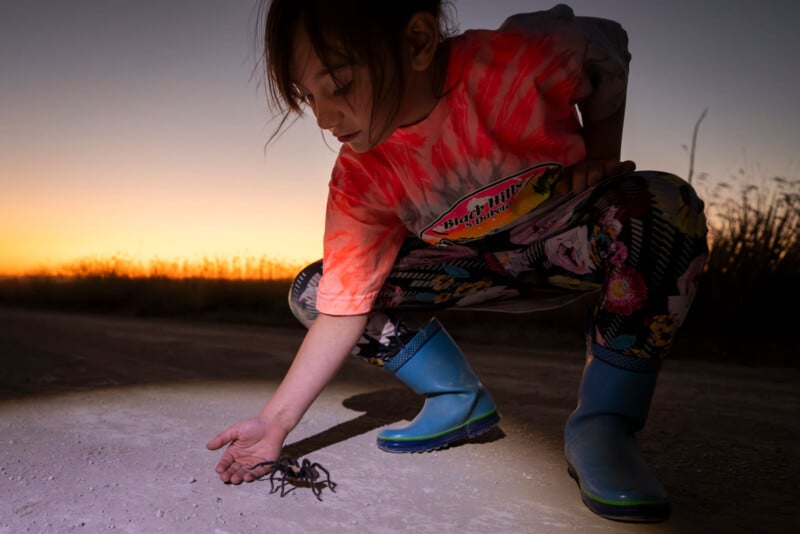
Every fall, as the days get shorter and colder, a groundswell of tarantulas takes over the landscape of La Junta, Colorado, and the surrounding southeastern Colorado region. Conservation and wildlife photographers Devon Matthews and Kristi Odom were on site this year to document the incredible annual event.
What may look at first glance like a migration of tarantulas in La Junta is a mating ritual performed by sexually mature male tarantulas. In La Junta, it is primarily the Oklahoma Brown Tarantula who begin seeking a mate when they turn eight years old or so.
Before they’re ready to look for a mate, these spiders have spent their entire lives in the grasslands of southeastern Colorado. Once ready, they’ll venture off into the world, traveling as many as 20 miles to find a female using their sense of touch and vibration.
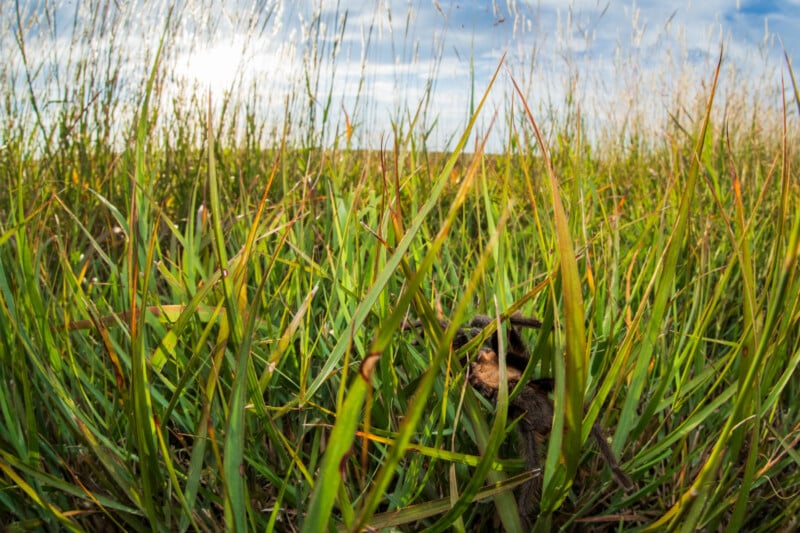
The mating adventure is often a last hurrah for the male tarantula. Whether killed by predators — like hawks and wasps — run over by a car as the spider crosses the road, self-inflicted starvation, or being consumed by their mate, the males aren’t long for this world once they’re ready to mate.
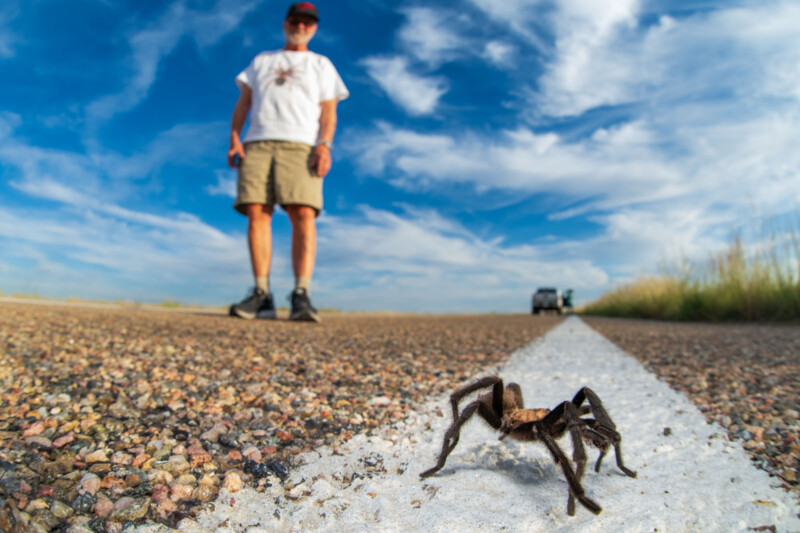
The annual Tarantula Festival draws many spider fanatics to La Junta. It is visually spectacular and one of the best opportunities for people to see one of nature’s strangest mating rituals.
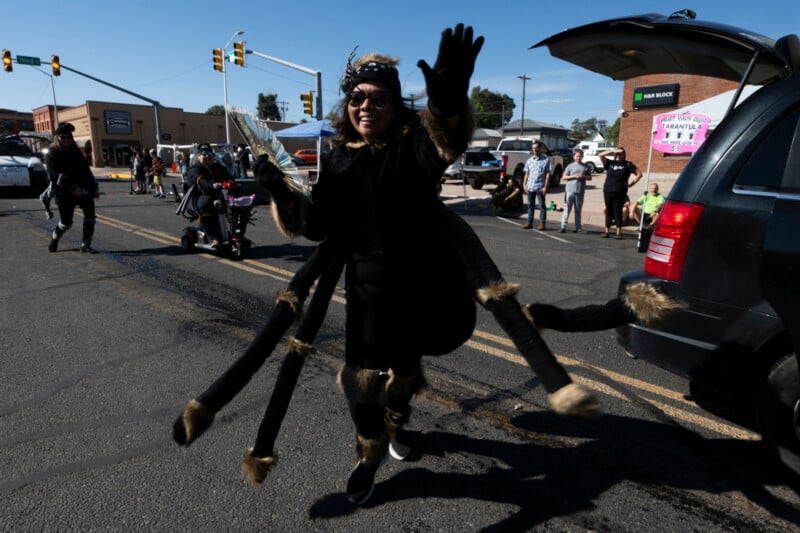
The festival celebrates instead of targets tarantulas, a frequent subject of misunderstanding, violence, and fear. Despite their “scary” appearance, many tarantulas, including the Oklahoma Brown Tarantula, pose little to no threat to humans and are much happier to scurry away than stand their ground.
Fighting Fear Through Photography
Beautiful wildlife images like those captured by Matthews and Odom help de-stigmatize tarantulas and show that they are wonderful creatures that deserve respect, at the very least, if adoration is a bridge too far.
Tarantulas are an uncommon photography subject for many, something Matthews explains to PetaPixel.
“Showcasing underrepresented species is something I’ve been thinking about a lot after working with the tarantulas. And attending La Junta, the annual Tarantula Festival, really opened my eyes to the fact that there are people yearning to celebrate underrepresented species. And La Junta gives them an amazing place to all come together and celebrate that!”
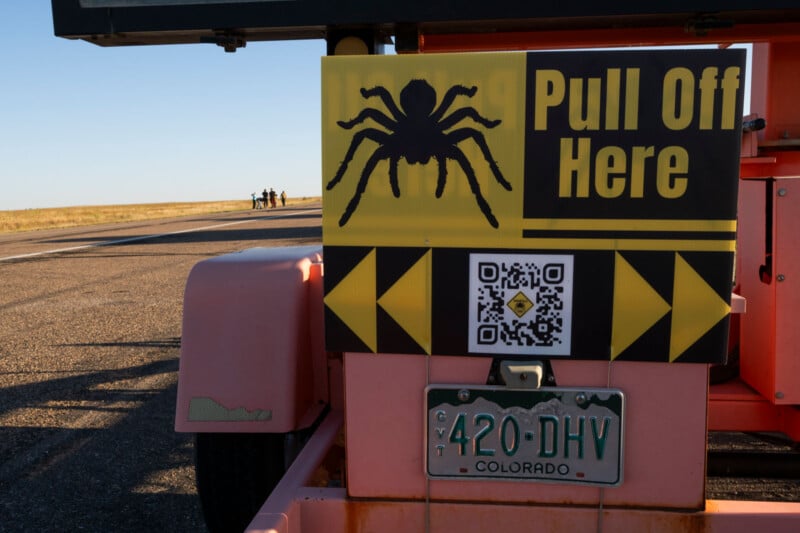
“If you’ve ever seen [tarantulas] in the wild, you’ll know they’re just doing their own thing. They’re hardly worried about you unless you are intentionally aggravating them,” Matthews adds.
As for “showcasing” the tarantulas, Matthews explains, “I felt getting good eye contact and getting catchlights in their eyes was necessary to build a connection through the photos. Eye contact is a great way we as humans connect with other humans and also animals.”
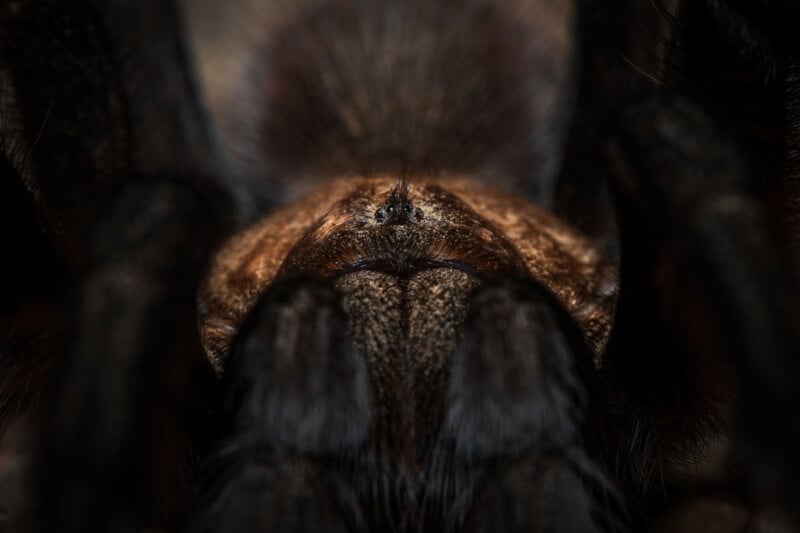
“And without the catchlights, the eyes can appear ‘dead,’ which would not help a species like the tarantula in overcoming the stigma of it being scary. A lot of my images also feature a side profile, so the tarantula is not looking straight at the viewer. I thought this may come off a little less intimidating.”
“My personal mission that I keep at the core of my photography and filmmaking is to connect people emotionally to animals and celebrate those who fight to protect the natural world,” says Kristi Odom, Nikon Ambassador, and world-renowned conservation, wildlife, and nature photographer.
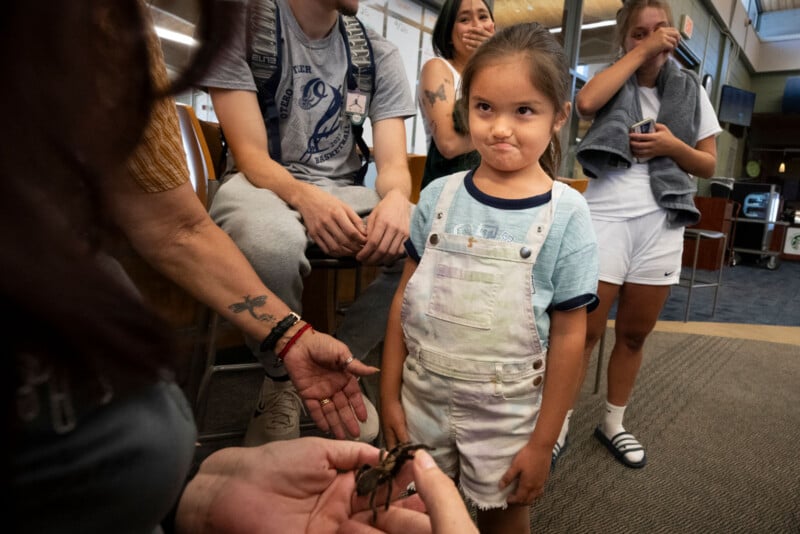
As for advice for wildlife photographers like Devon Matthews, whom Odom is actively mentoring, she says, “You need to research, talk to experts, meet scientists, observe, and become educated on the wildlife you photograph. From behaviors, environment, challenges, human/wildlife conflict, you need to learn as much as possible and try to put that narrative into your work.”
“Most importantly, you have to let yourself feel and fall in love with your subjects. Passion is contagious, and the more you love, the more you can get others to care,” Odom explains.
Eye Contact is Essential
Matthews and Odom have similar approaches when approaching the tarantulas.
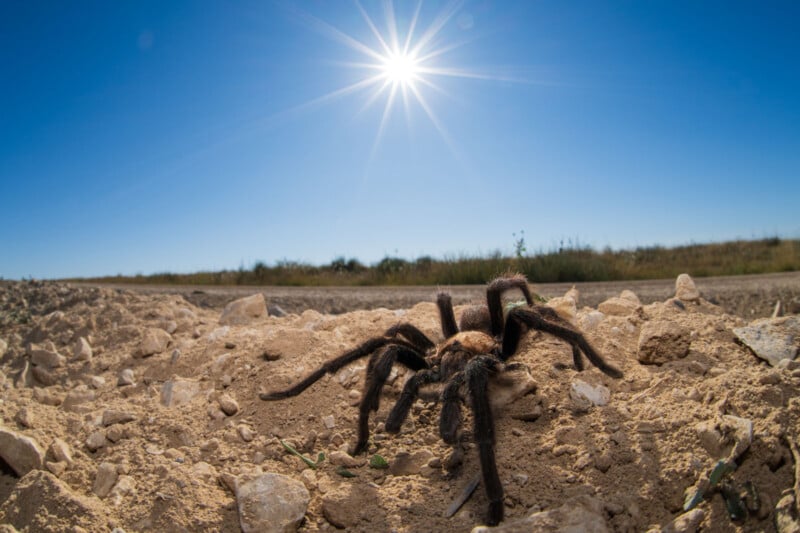
“It’s difficult photographing tarantulas as they are very low to the ground. My approach when photographing the tarantulas has been to get as low to the ground as possible. Newer cameras have great flip-out screens, like on my Nikon Z8, so you can hold your camera close to the ground and take the photo crouching,” Matthews says. “But personally, I enjoy laying on the ground to get the shot. Doing this makes the moments more enjoyable and memorable for me and also gives me more control over framing. I like to get in there.”
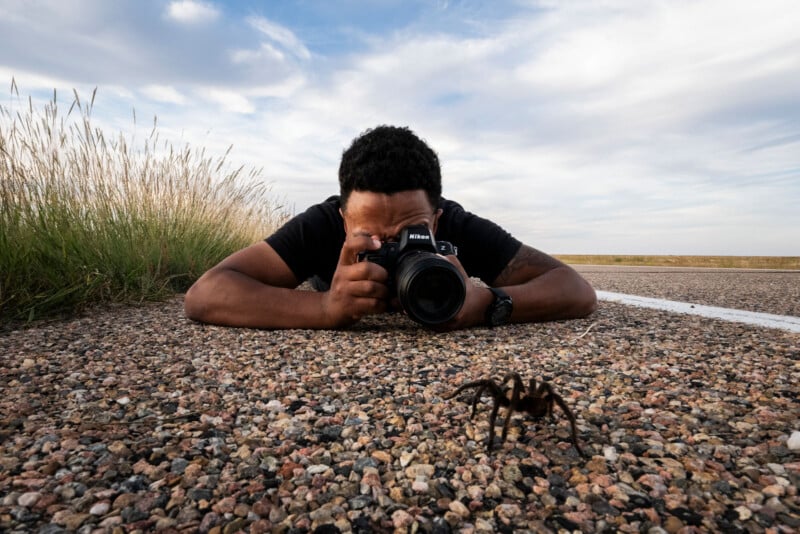
“Last year, I focused on a lot of close-up macro shots where the frame was filled with the tarantula. This year, my focus was to get more environmental shots, so I opted to shoot a wide-angle lens for the majority of my trip. I really wanted to show where the tarantulas live and to tell the wider story of their migration. This involves them crossing a local highway in search of mates,” Matthews says.
As for Odom, while she photographs every subject differently, there are always common elements.
“I photograph every subject a bit differently. A lot of the same principles apply: keep my images distraction-free, pay attention to light, check eye movement and composition, and try to highlight behavior and my subjects. I worked on trying to get shots that showed people’s reactions, from fear to fascination. While I do not encourage any human/wildlife interaction, when working a story, I sometimes have to put my photojournalism hat on and not interfere with what’s going on. I saw a little girl trying to touch a wild tarantula. She was super gentle, and so was the tarantula. I liked that shot since it showed a softer side of this usually feared arachnid.”
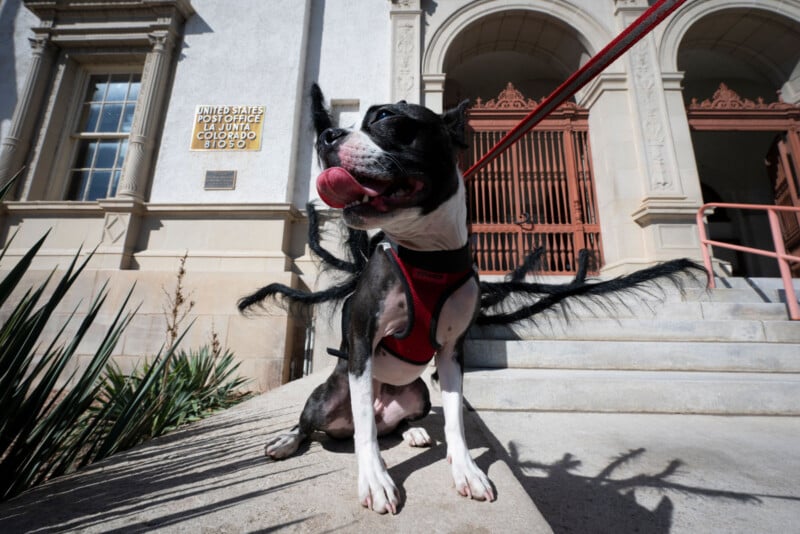
“Photography can be that tool that educates, which can change fear and perception,” Odom says.
“During the tarantula migration, a lot of tarantulas die in their search for love from crossing roads and getting smashed by cars. I wanted to show this, so I shot a tarantula that we found crawling under a car. While the car wasn’t moving, I took the shot with a flash using rear curtain sync and moved the camera during the exposure, giving the tires the illusion that the car is moving,” Odom adds.
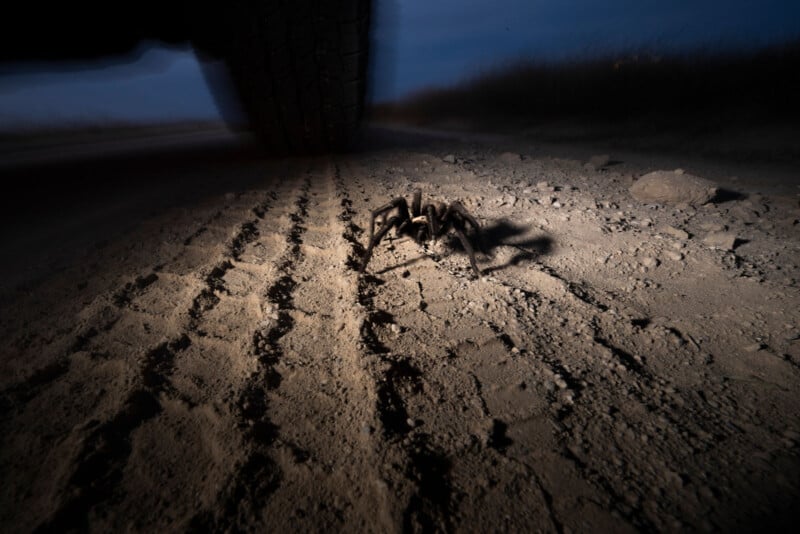
Matthews and Odom alike understand the importance of a subject’s eyes and being on their level, even when they are as low to the ground as the tarantulas.
“I love it when I get to pull out my macro lenses, and I definitely did on this shoot. I used my Nikkor Z 105mm f/2.8 Macro and my Nikkor Z 50mm f/2.8 Macro. I also used my Nikkor Z 24-70 f/4 and Nikkor Z 14-30 f/4 for some of the shots of people,” explains Odom.
“It was important to get on eye level with the tarantulas, which is why I love that I can tilt up the touchscreen on my Z8 and Z9 so I can use that screen to focus and shoot. Lying on the ground with tarantulas was something I wasn’t too comfortable with (even though Devon had no problems with this). It is important to stay calm when photographing wildlife because I believe that animals can feel our body language. That was more challenging on this shoot, for sure.”
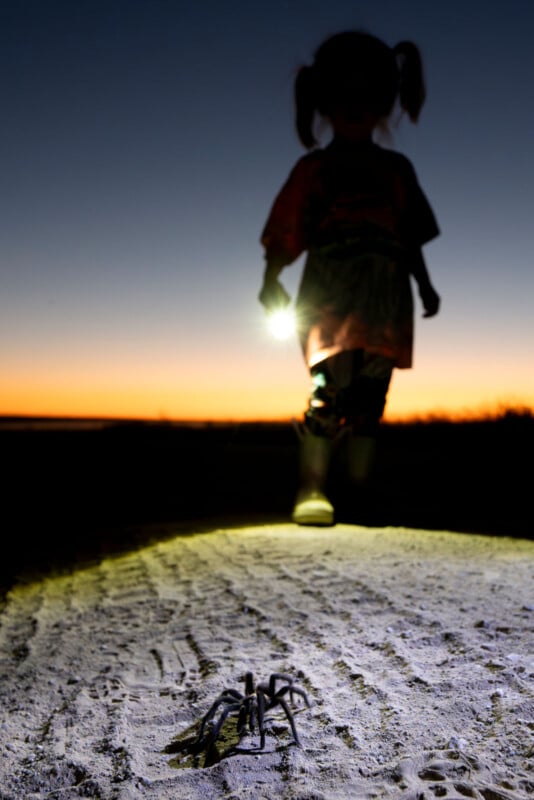
Even a seasoned professional like Odom, who has photographed as diverse a cohort of animals as just about anyone else on the planet, sometimes has to overcome fear and discomfort in the field. It is okay to feel a bit worried when photographing certain animals.
Changing Technology and Visual Storytelling
For Odom and Matthews, who both use Nikon Z mirrorless cameras and lenses, improving technology has enabled them to capture new stories and tell existing stories in fresh, exciting ways.
Beyond things like flip-out screens making it easier to photograph tarantulas, better video features have been a boon to people like Odom. “Whenever I am out in nature, I ask myself, ‘What do I feel?’ I found that when in nature sometimes the feeling is around movement, like how a tarantula moves its legs. When the movement inspires me, I switch my Z cameras to video. I love that slow-motion video can reveal a world that we can’t see with our eyes and connect us deeper to nature. I have learned so much about wildlife through slow-motion videos, from seeing bees fight in the air to sharks and how they eat their prey. Video has become a tool of discovery for me, that helps reveal more of nature’s intricacies.”
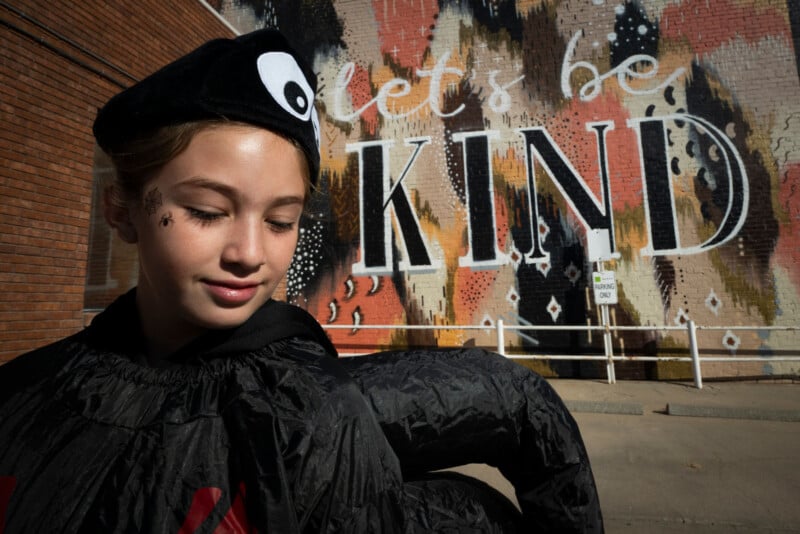
Improved autofocus technology is crucial. In Odom’s case, the recent 4.1 firmware update for the Nikon Z9 improved autofocus tracking performance enough that she could photograph bees in flight for one of her most important projects.
“Technology is getting better and better. I have been working on a shot of a tiny native bee in the Amazon for almost three years. I wanted to show the flight pattern. This bee is the size of the ‘UN’ on an American quarter. The macro world is difficult with its shallow depth of field. These native bees are critical for the restoration of land that has been destroyed in the Amazon.”
“I went back last October, right after Nikon released firmware 4.1 for the Z9. I tried bird autofocus on these bees, and it tracked and locked on them in flight! I was amazed at how quick and accurate it was! I finally got the shot and lots of others that showed the path of this amazing insect in flight!”
Shedding Light on Local Stories
Something else that any photographer can do, no matter where they live or what animals they love the most, is do vital local work.
“Work local. The two stories I had published online in National Geographic were local. The first being about dragonflies and butterflies (and the people that count them) in Northern Virginia,” Odom emphasizes. “We are the best storytellers for our local biodiversity. Look for experts and people who work in your local parks, get involved in wildlife surveys, talk to local NGOs, go to your universities, and see what kind of work the students and faculty are doing. There are stories everywhere, and conservation and wildlife photography is about networking.”
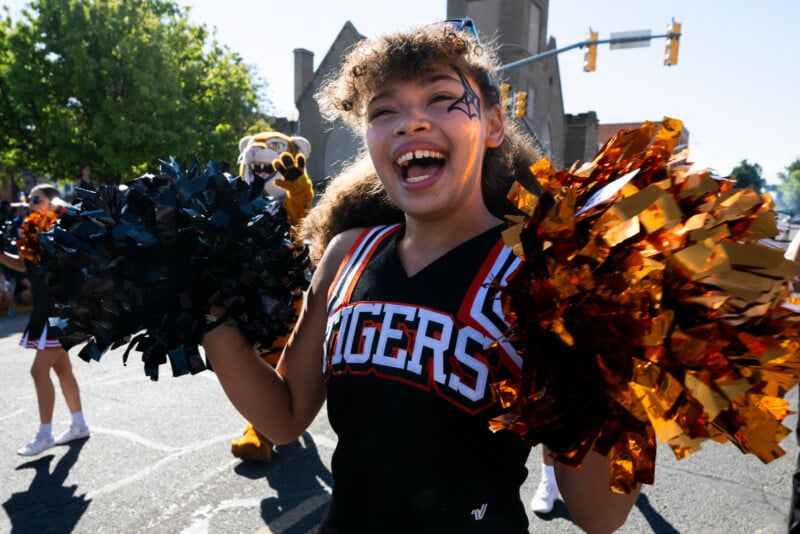
While Odom has won many awards during her career, they have not been a highlight for her personally, and she hopes that photographers don’t feel too discouraged if their work doesn’t get that sort of recognition. While publications and awards are a good way to get exposure, Odom says a better starting goal is helping local biologists with their work. There are people dedicating their lives to protecting animals, and helping get that work out there is vital.
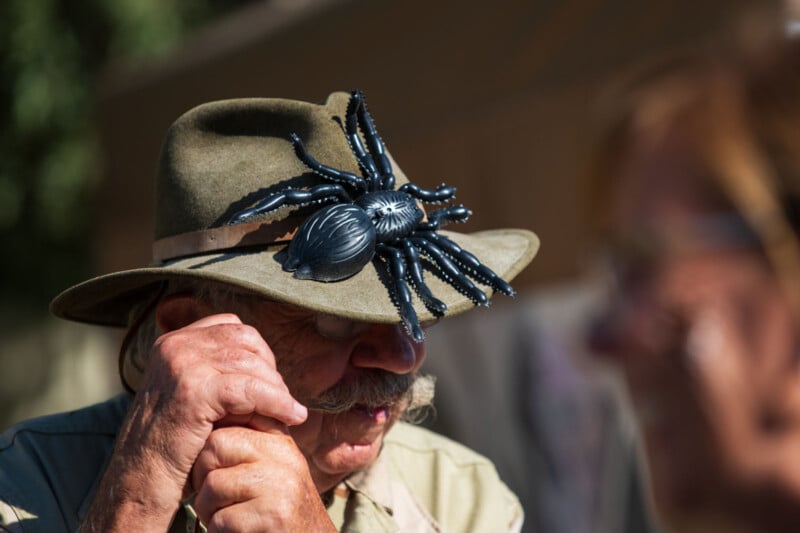
“My bee story that I have been working on for three years still gets rejected by every publication. But for me, it is still a success. The bee biologist that I have been working with uses my photography to educate indigenous communities all around South America (and soon Africa) on how to harvest native bee honey. This protects the hives and helps bee populations, which can help pollinate the Amazon. I can say with pride that my photography is helping restore the Amazon,” Odom explains.
“That is better than any award or publication.”
The Importance of Education
Odom’s desire to educate people goes beyond her stories. She is also committed to helping the next generation of photographers and visual storytellers, people like Devon Matthews.
“When Devon reached out to me a couple of years ago about my mentoring program, I was excited. He is exactly the type of passionate and talented individual that can and will make a difference. He is driven to better the world through visual storytelling and a unique passion for bugs. Like birders with a life list (birds they dream of seeing in their lifetime), Devon was the first I had met with a spider life list. It was a total honor to become his mentor. While he had the passion and skills for photography, creating stories and getting published were things I knew I could help him with. In the last year alone, he has taken off and has had multiple stories published for the National Wildlife Federation as well as here on PetaPixel. I can’t wait to see where he goes!”
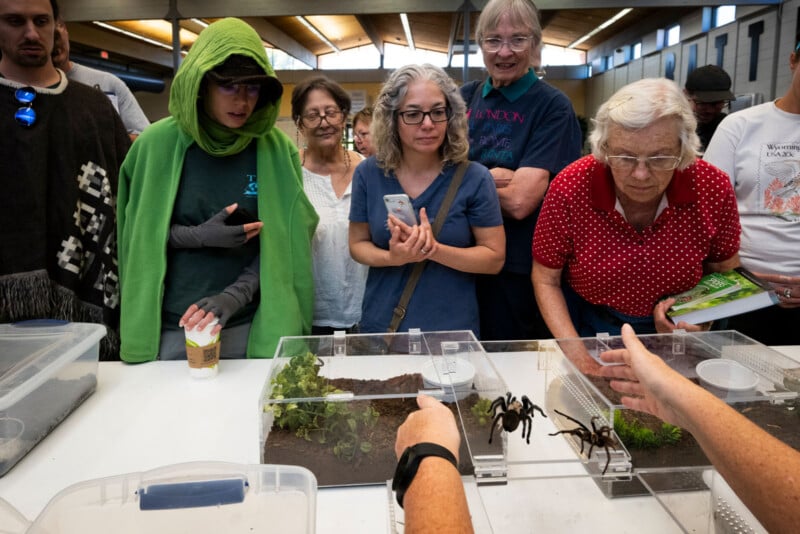
“I’ve been working with Kristi to transition from a photographer to a photographer and visual storyteller. Given her own experience and success in being a visual storyteller, it has been an invaluable experience for me,” Matthews says. “And we’ve developed a bit of a friendship as well. She’s an amazing person to work with and a legendary photographer!”
Odom emphasizes how important it is that the world has visual storytellers. The need for people to see and understand what is happening in the world is essential.
“With changes in climate, destruction of natural habitats, and species going extinct, photographers can provide the voices for our hurting planet and its wildlife,” Odom says. “I strongly believe that if you give passionate people the right tools, it’s amazing what they can do, and I want to help inspire masses of visual storytellers to fight for our planet.”
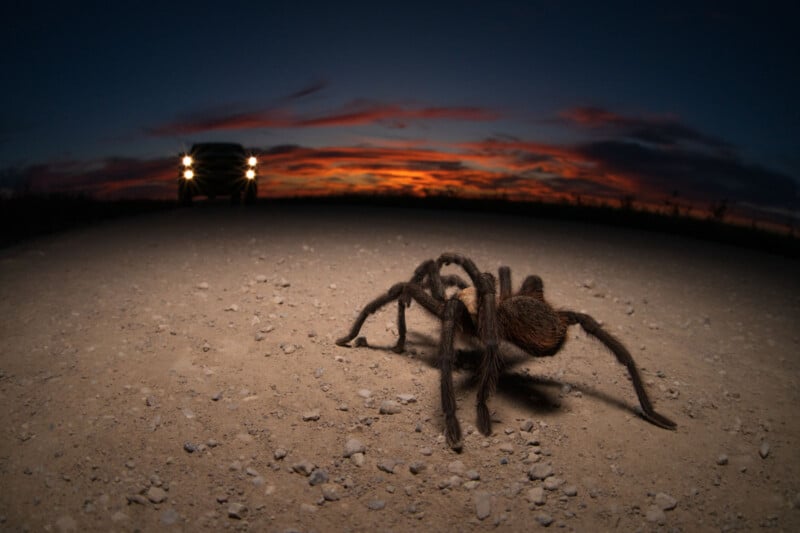
Compassion and Respect are Must-Have’s for Successful Nature and Wildlife Photography
“It is important not to cause harm or hurt wildlife for the sake of a photograph,” says Odom.
Of course, people can cause harm by accident, just because they don’t know any better. “Whenever you are in a National Park, I suggest going online and checking out the park you are visiting and looking for their wildlife safety page. It will talk about safe distances and other ethical practices to make sure that the wildlife isn’t disturbed.”
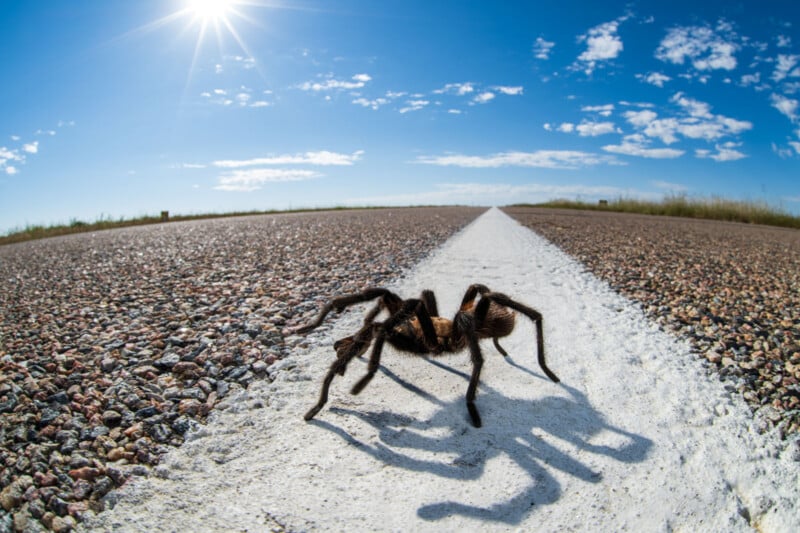
“The Audubon Society has a great page on ethical photography for birds (but it really is applicable to all wildlife), Audubon’s Guide to Ethical Bird Photography and Videography and iLCP (the International League of Conservation Photographers) also has a great guide. All photographers should read these articles and love and respect the wildlife that we love photographing,” the Associate Fellow at the International League of Conservation Photographers adds.
Image credits: All images by © Devon Matthews and © Kristi Odom. Individual photographs are credited in the captions.